Pre Requisite: Note the S3 Link from AWS
- You would need to note down the S3 Link of the Model file from AWS. A sample of how the S3 link is like ->
s3://infer-global-models/sample-module/gpt2-medium-1.5gb.zip
Steps to import model file from AWS S3
Step 1: Add Model in your workspace.
- Navigate to your desired workspace in Inferless and Click on
"Add a custom model"button that you see on the top right. An import wizard will open up.
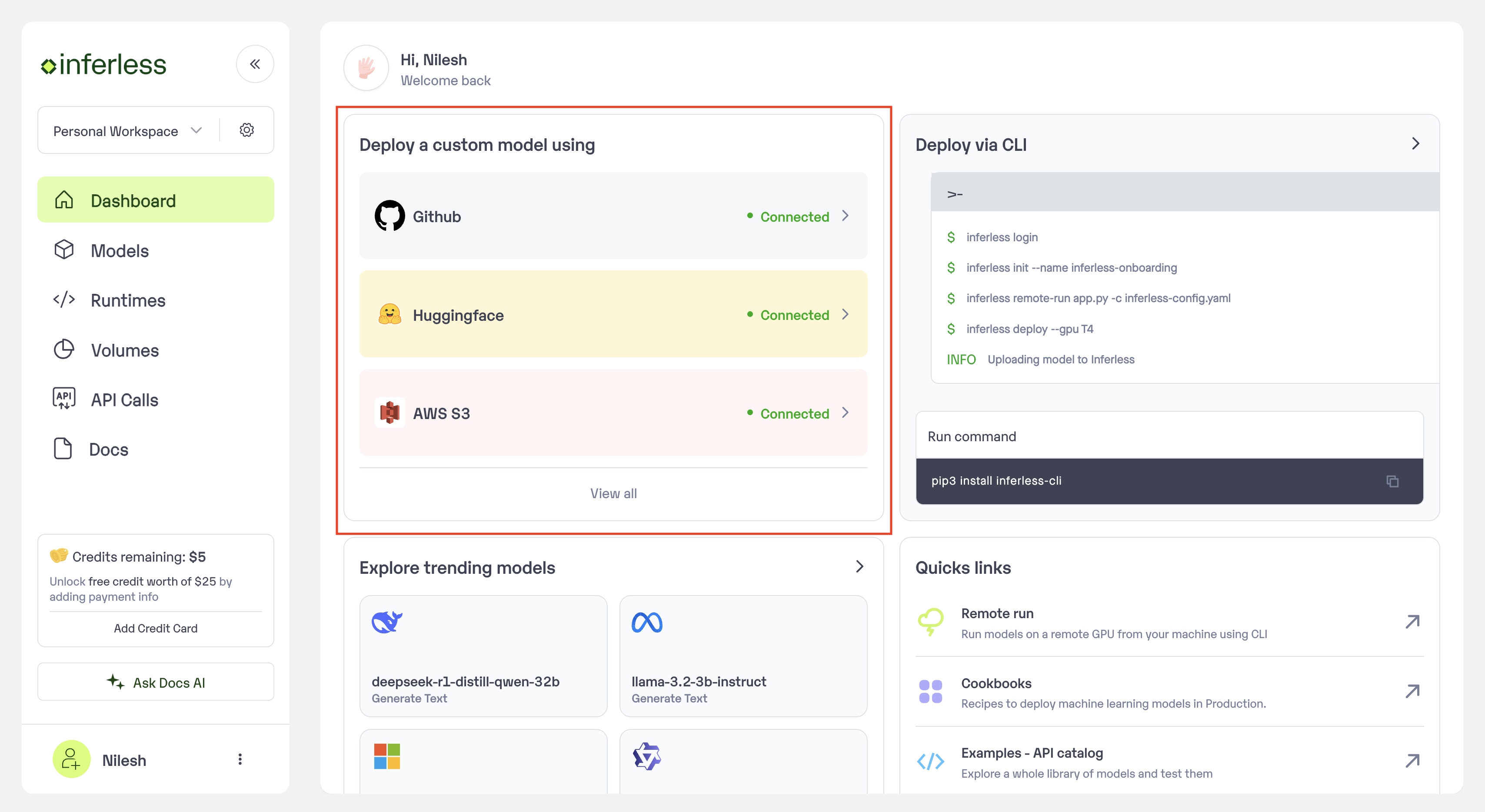
Click on Add Model
Step 2: Choose the source of your model.
-
Since we are using a model from AWS S3 in this example, select
AWS S3as the method of uploading. -
To proceed with the upload, you will need to connect your
AWS account. This is a mandatory step as this helps us download the file from your AWS account.
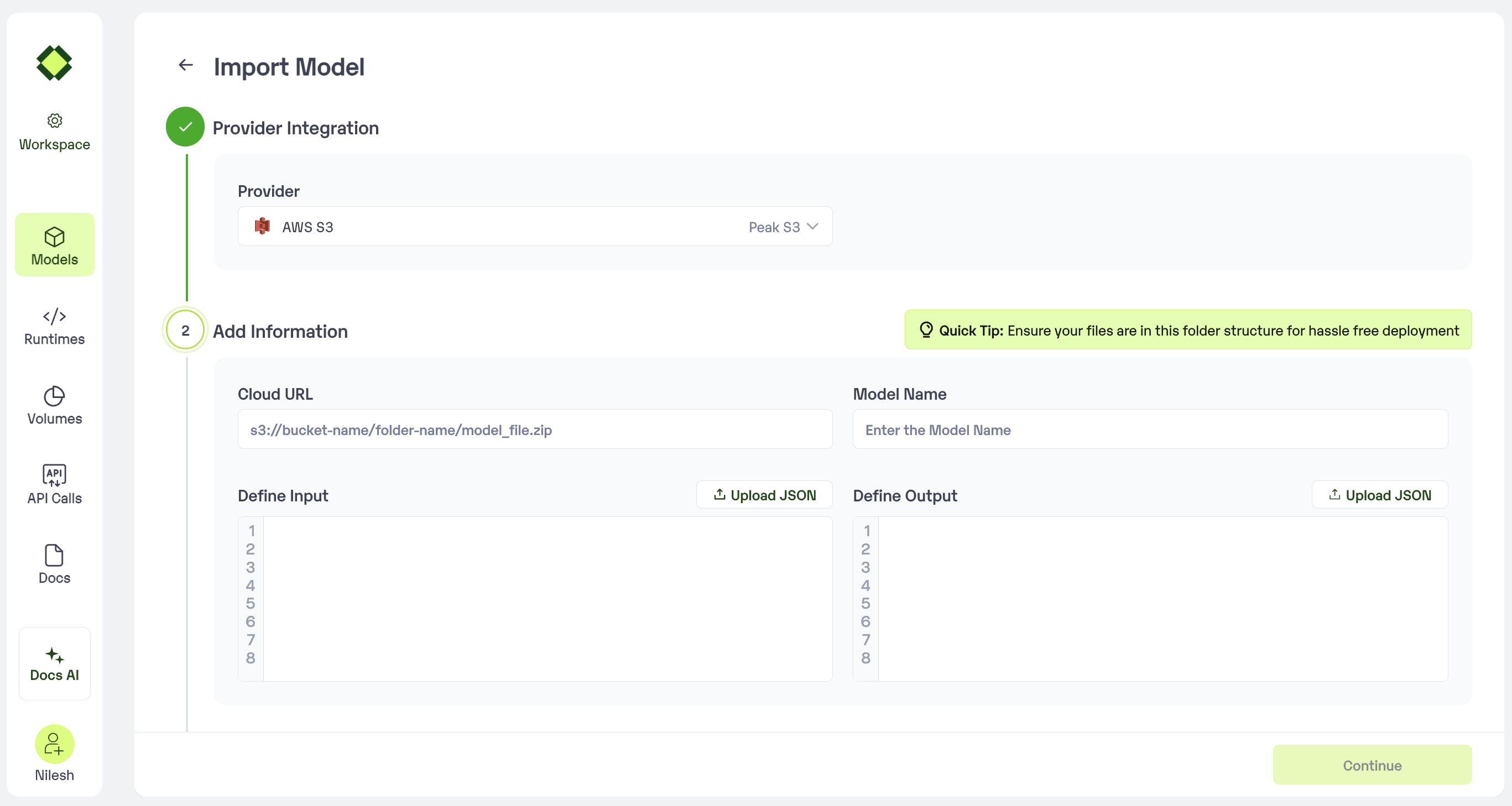
After you have selected Repo
Step 3: Enter the model details
-
Provide the
Cloud URL, which is a S3 Link of the Model file from AWS. - Model Name: The desired name of the model that you wish to give.
- Sample Input: Enter an example of how the input should be formatted for the model in JSON format.
-
Sample Output: Enter an example of how the output would be formatted for the model in JSON format.
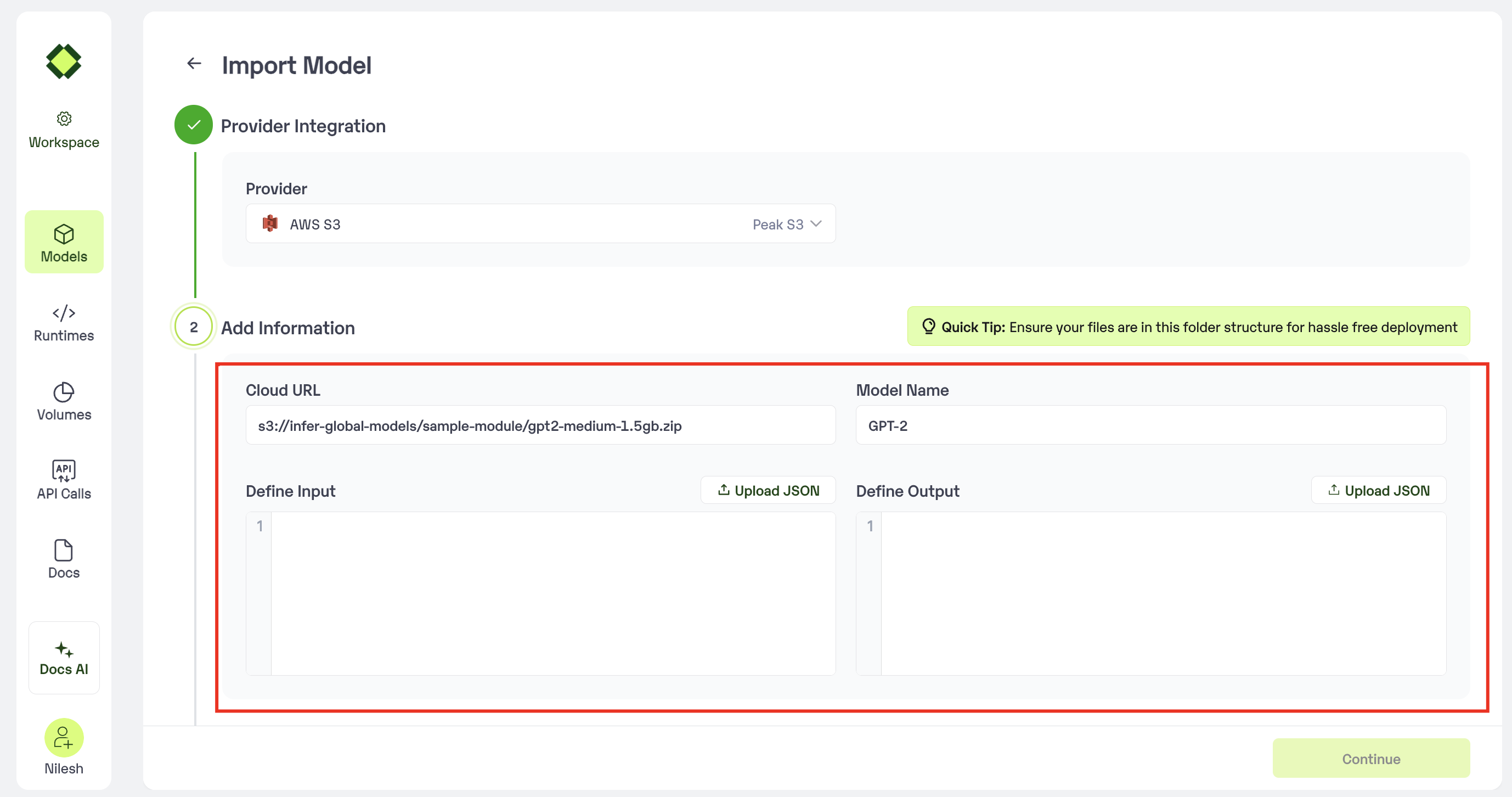
Enter the details as noted
- In case you would like to set up
Automatic rebuildfor your model, enable it- You would need to set up a webhook for this method. Click here for more details.
- In case you would like to set up
Step 4: Configure Machine and Environment.
- Choose the type of machine, and specify the minimum and maximum number of replicas for deploying your model.
- Min scale -
- Max scale -
- Configure Custom Runtime ( If you have pip or apt packages), choose Volume, Secrets and set Environment variables like Inference Timeout / Container Concurrency / Scale Down Timeout
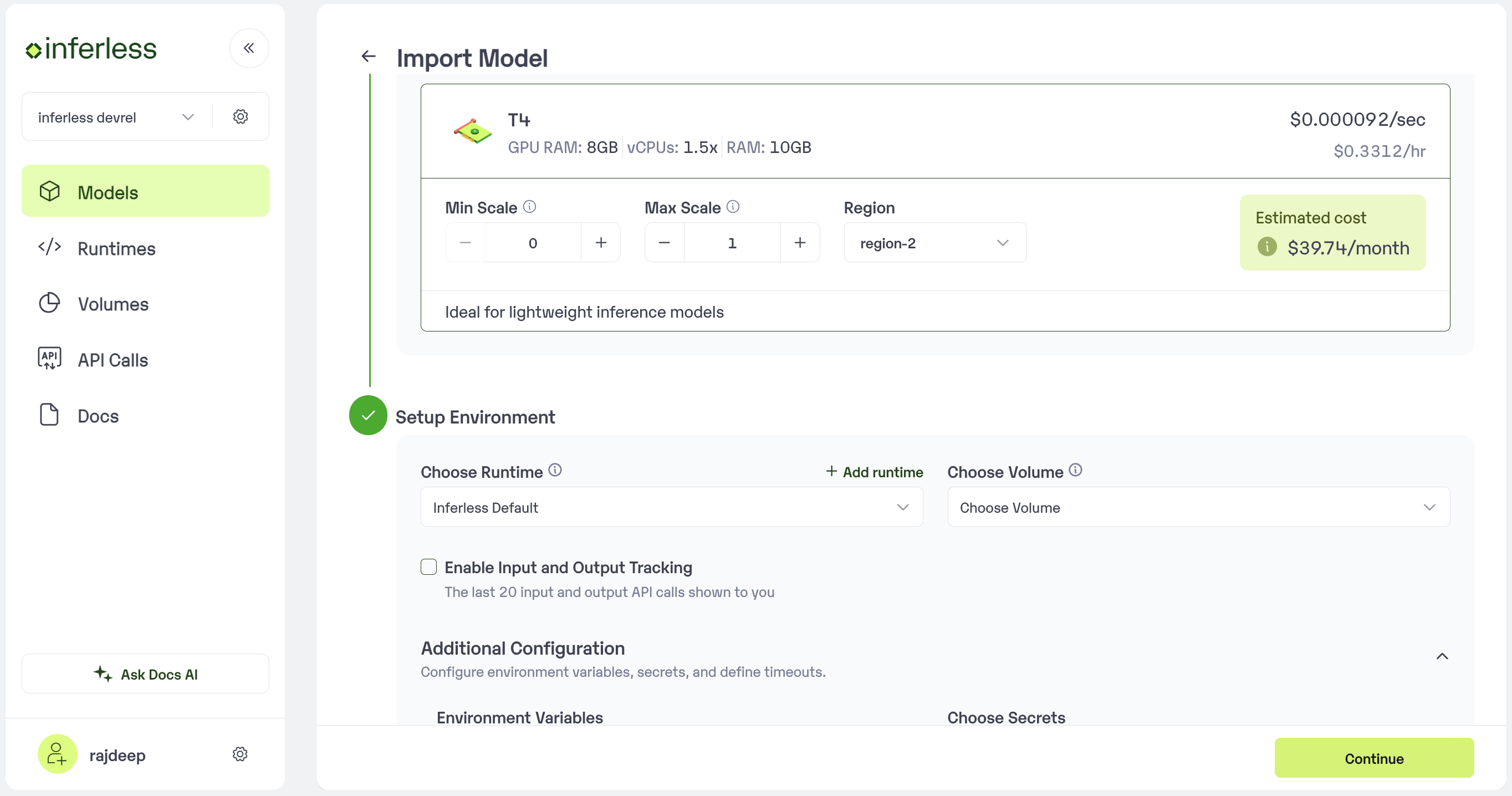
Set runtime and configuration
Step 5: Review your model details
- Once you click “Continue,” you will be able to review the details added for the model.
- If you would like to make any changes, you can go back and make the changes.
-
Once you have reviewed everything, click
Deployto start the model import process.
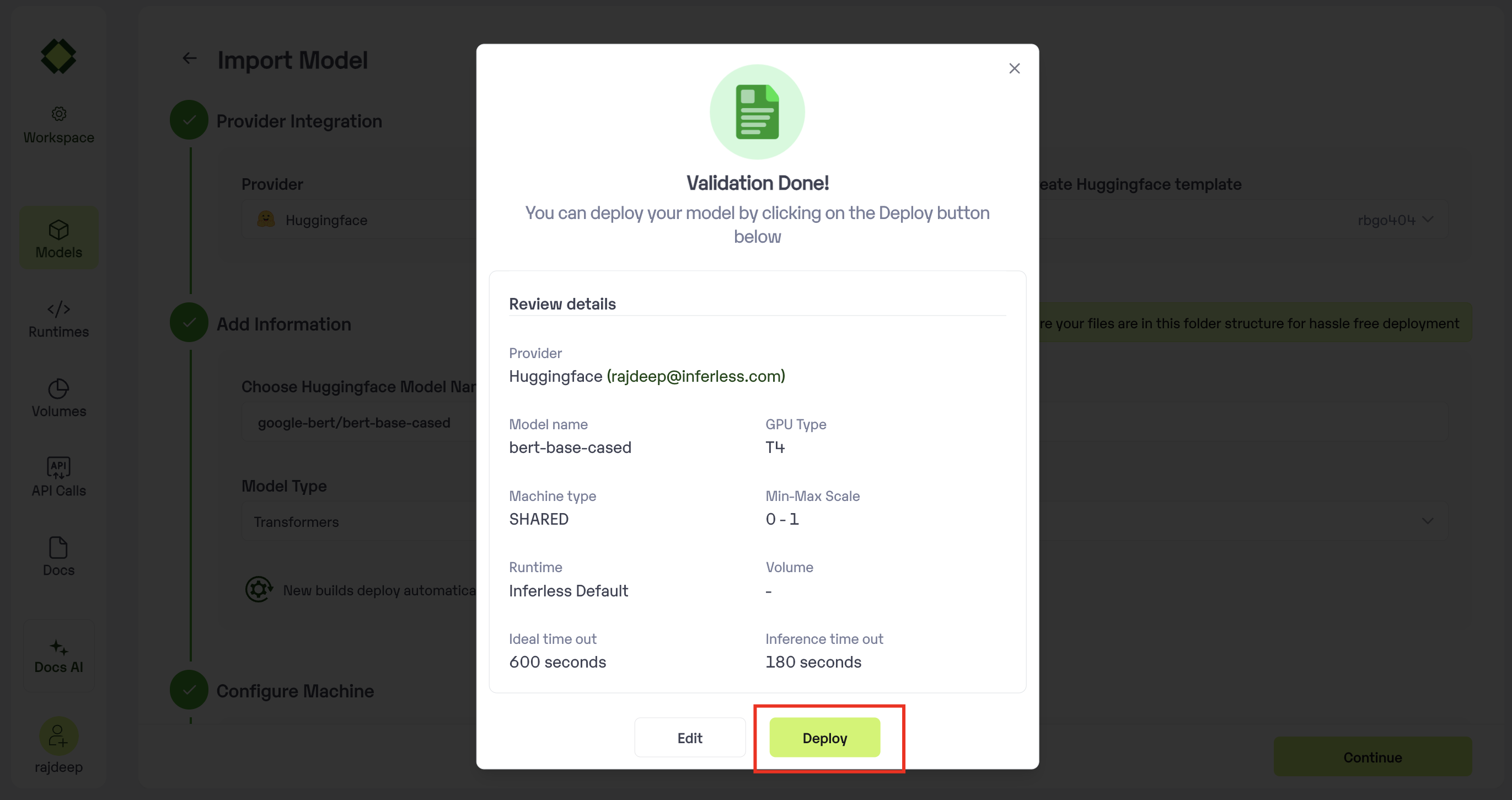
Review all the details carefully before proceeding
Step 6 : Run your model
- Once you click submit, the model import process would start.
-
It may take some time to complete the import process, and during this time, you will be redirected to your workspace and can see the status of the import under
"In Progress/Failed"tab.\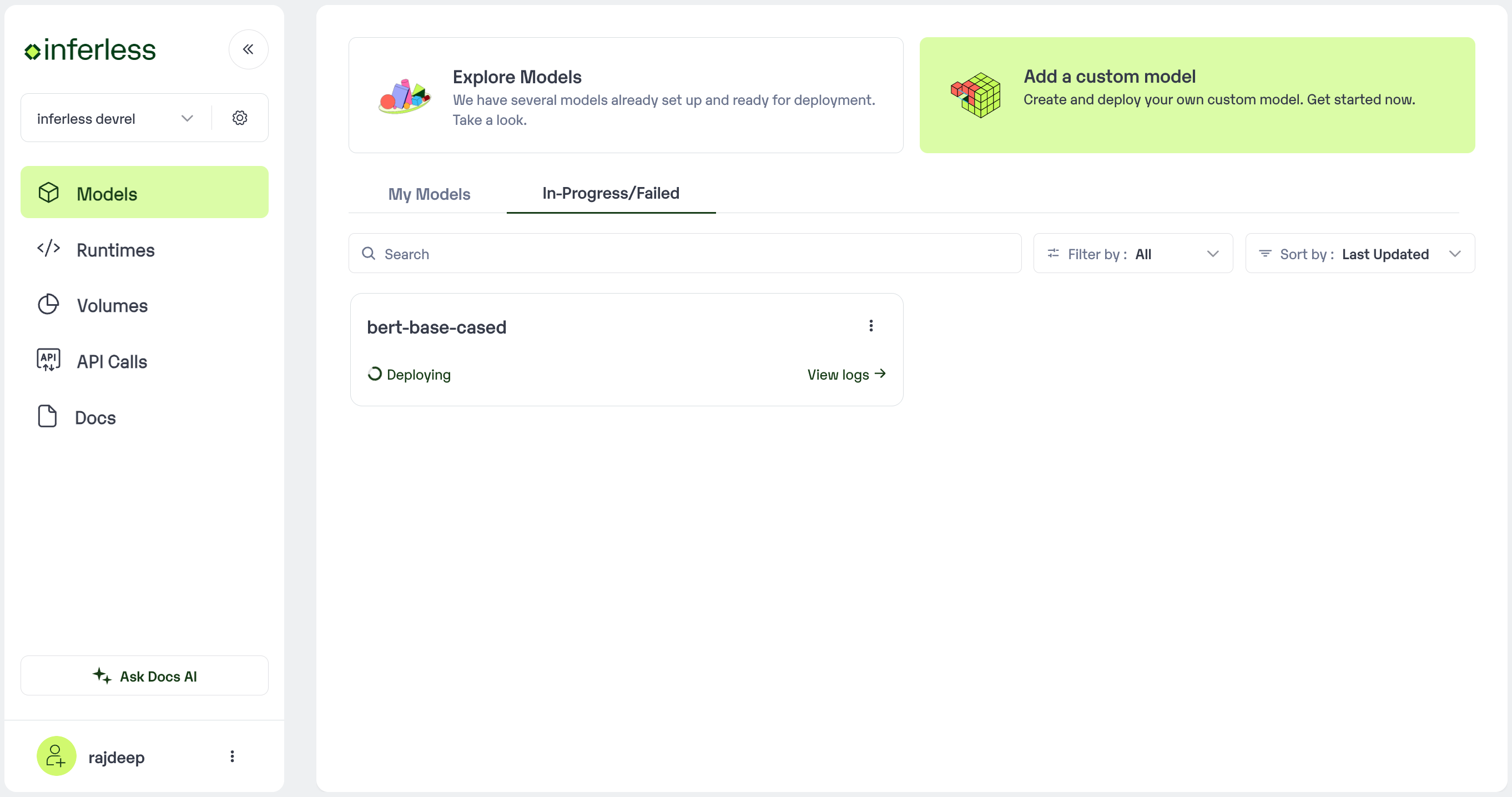
View the model under `In-Progress/ Failed`
- If you encounter any errors during the model import process or if you want to view the build logs for any reason, you can click on the three dots menu and select “View build logs”. This will show you a detailed log of the import process, which can help you troubleshoot any issues you may encounter.
- Post-upload, the model will be available under “My Models”
-
You can then select the model and go to
-> API -> Inference Endpoint details.Here you would find the API endpoints that can be called. You can click on the copy button on the right and can call your model.
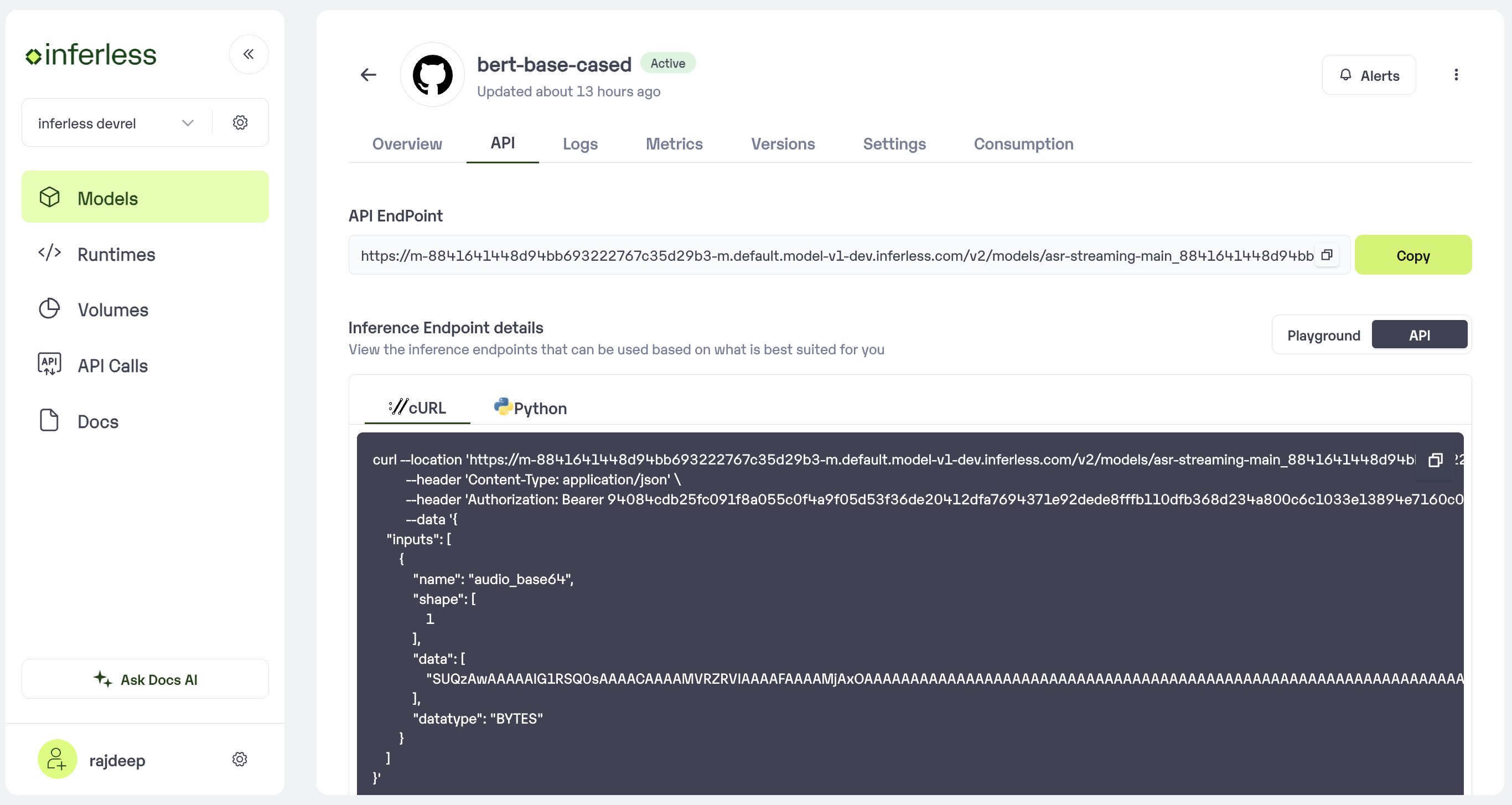
Under the API Tab, you can view the API endpoint details.
Extra Step: Getting API key details
- You can now call using this from your end. The inference result would be the output for these calls.
- In case you need help with API Keys:
- Click on settings, available on the top, next to your Workspace Name
- Click on “Workspace API keys”
- You can view the details of your key or generate a new one\
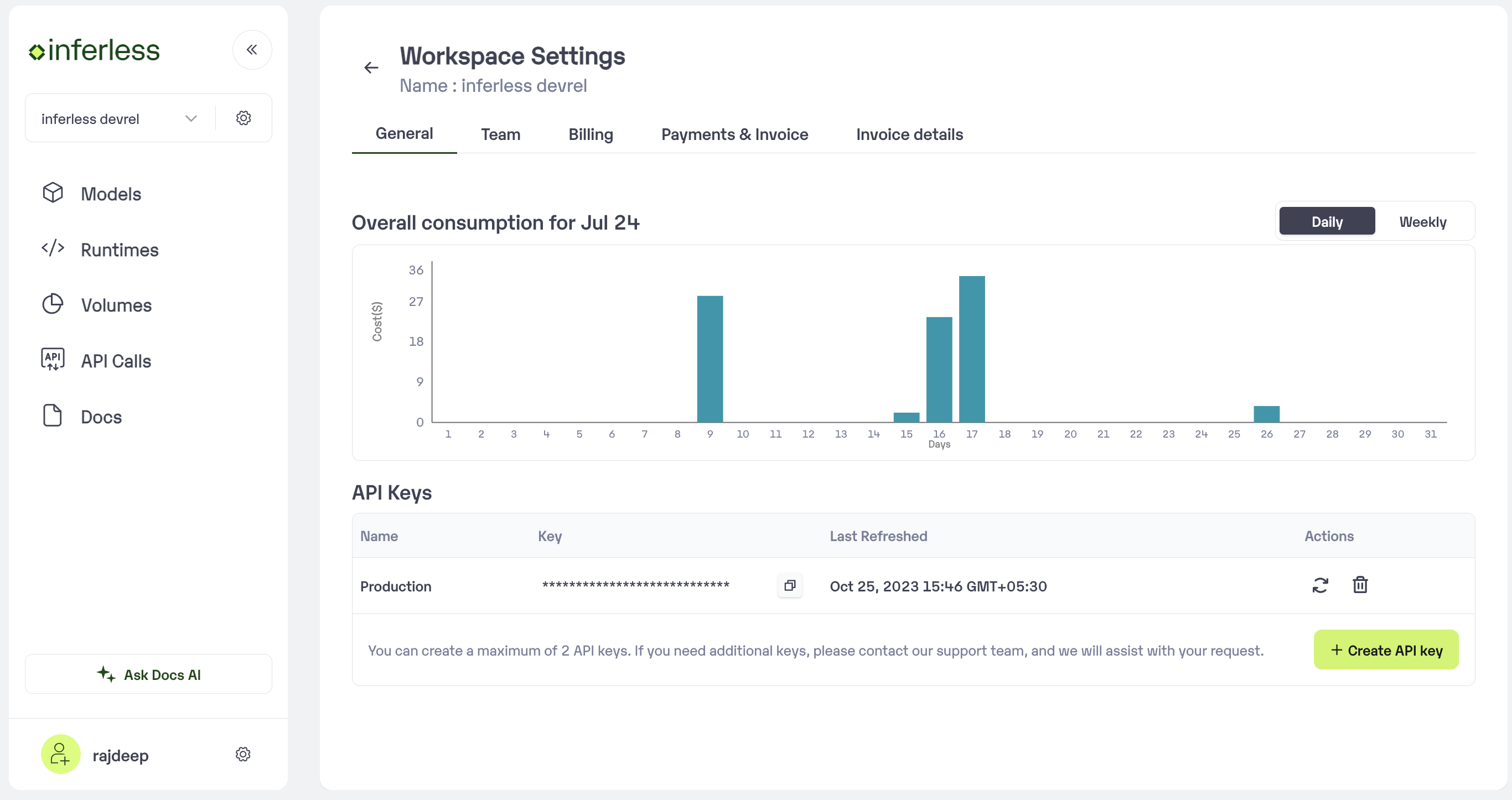
Sample for now
Using CLI
Make sure you follow this below folder structure in the zip file-
Connect your AWS S3 account using this below command and enter the name, access-key and secret-key
-
Once your integration is done. You can initialise the model using this command
-
Now that your model is initialised.
- To do default deployment use this command
- To do customised deployment use this command